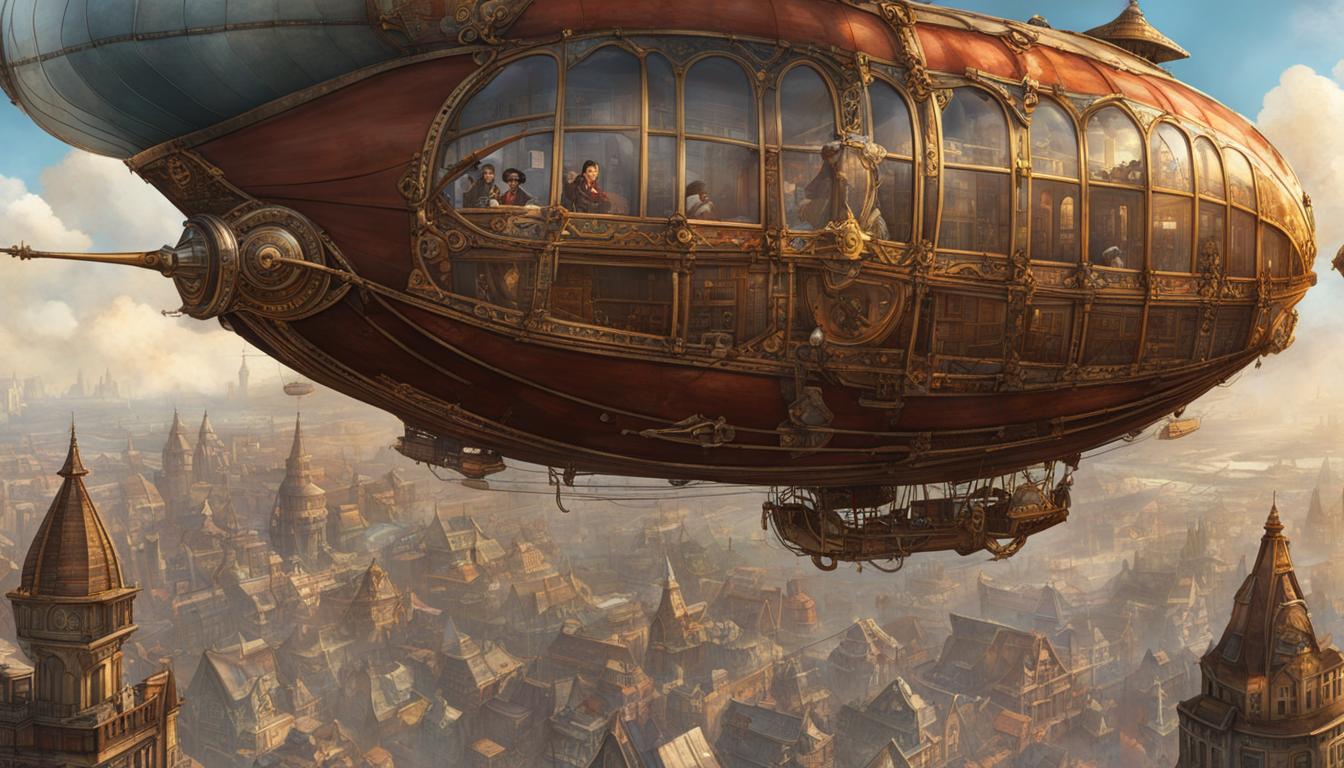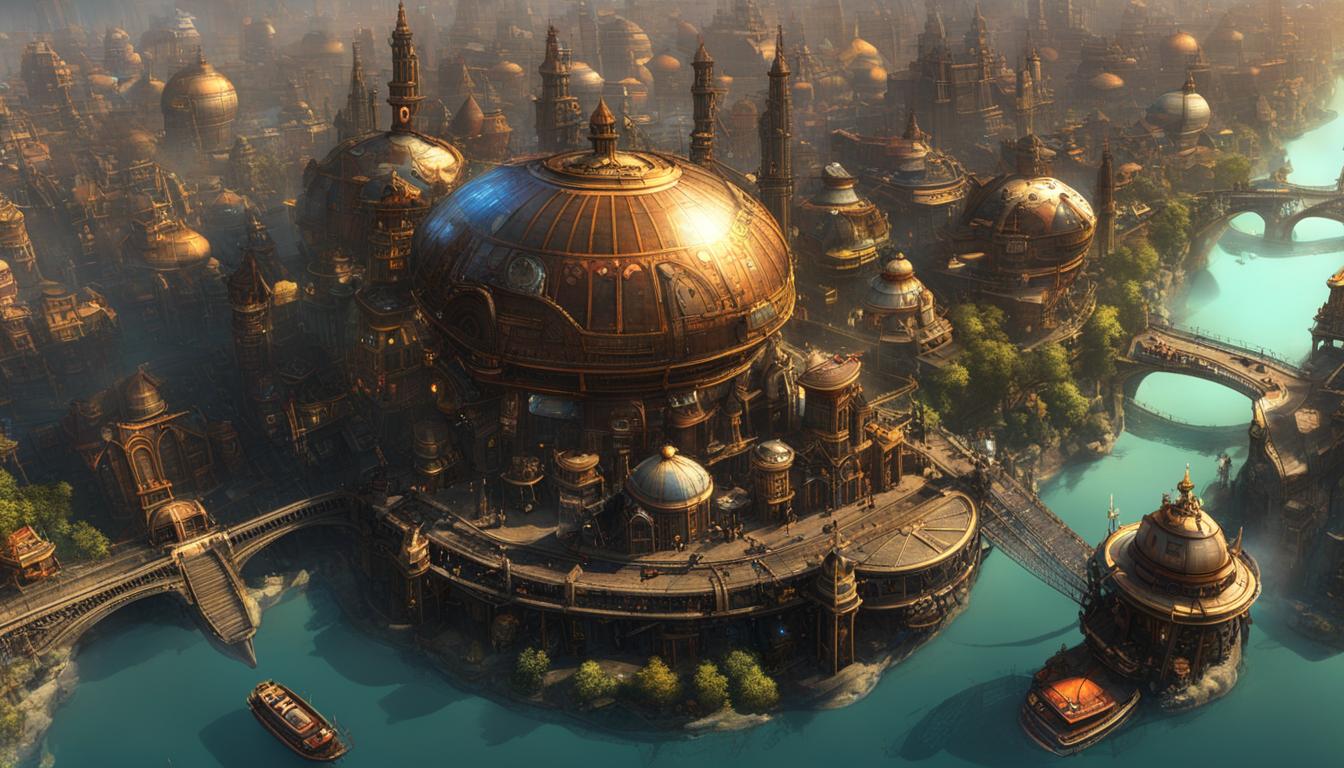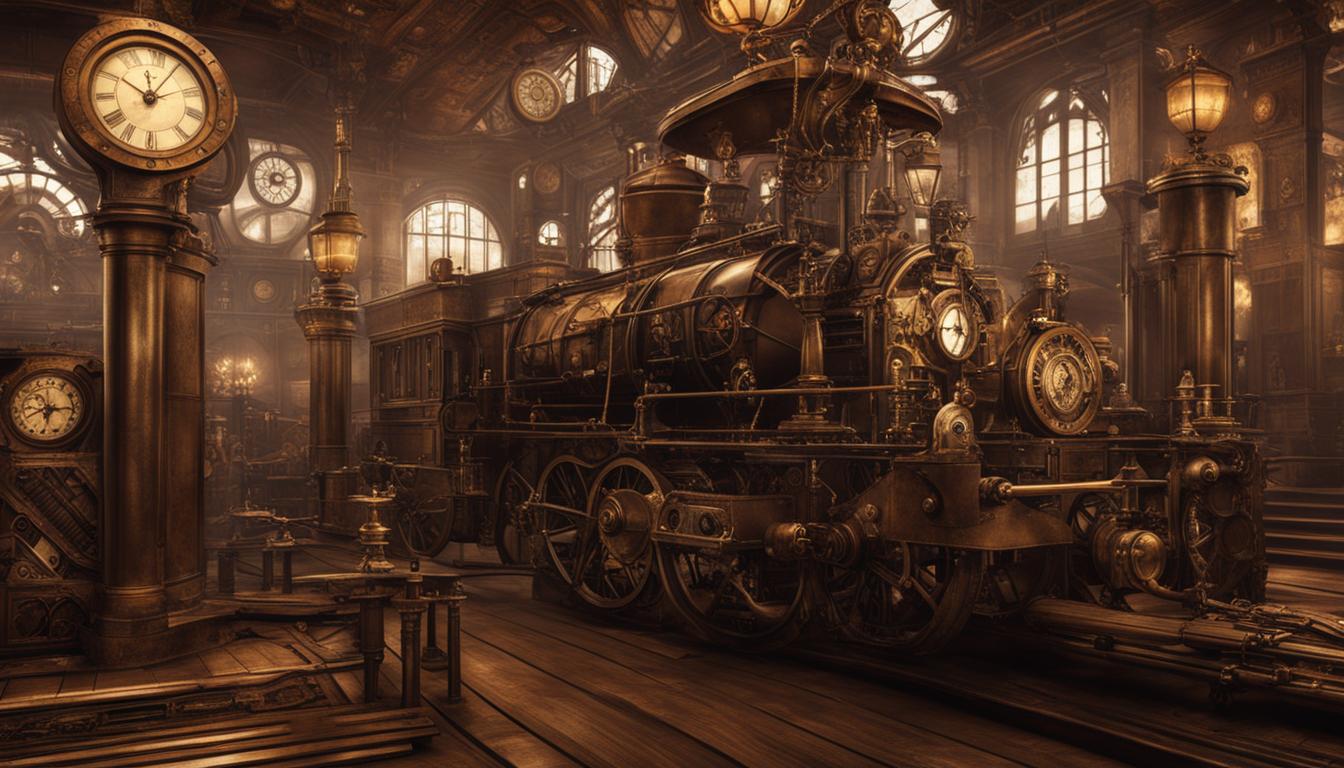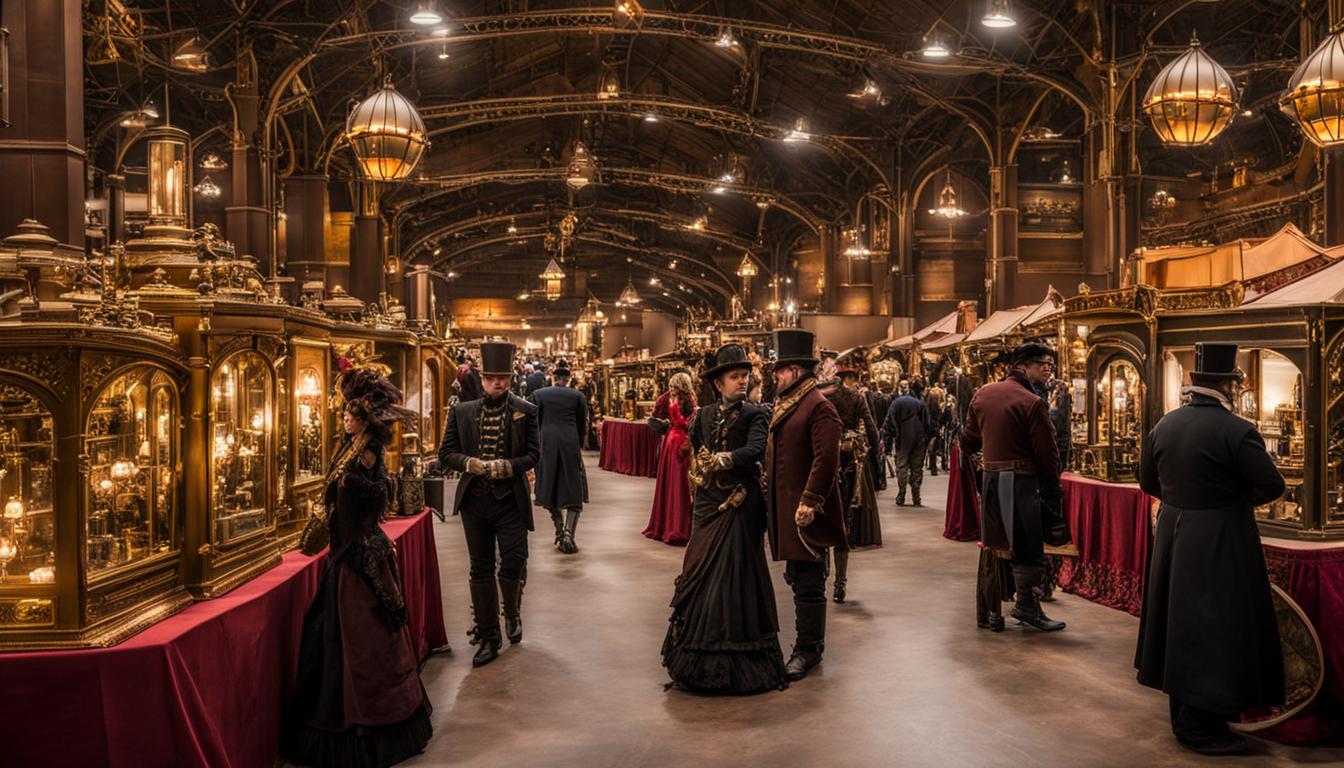Steampunk storytelling has long been criticized for its lack of diversity, often featuring narratives focused on white, straight, and able-bodied characters. However, there is a growing movement within the genre to promote inclusivity and explore diverse perspectives. This article will delve into the importance of representation in steampunk literature and examine how the genre approaches cultural diversity.
Key Takeaways
- Diversity in steampunk storytelling is crucial for creating an inclusive genre.
- Authors should strive for accurate representation and avoid stereotypes.
- There are many steampunk works that celebrate diversity and offer multicultural perspectives.
- The conversation around diversity in steampunk also involves examining the impact of whiteness.
- By promoting diverse perspectives, steampunk can evolve and resonate with readers from all backgrounds.
The Importance of Accurate Representation in Steampunk Fiction
Accurate representation in steampunk fiction is crucial for the genre to truly embrace diversity. It is not enough to simply include diverse characters; their experiences and cultures must be portrayed authentically and with respect. Works such as “Stormdancer” by Jay Kristoff have been criticized for their racist and ignorant portrayals of Japanese culture, highlighting the need for careful research and understanding when writing about different communities. Authors should strive to incorporate well-researched elements from diverse cultures to create immersive and accurate storytelling. By representing diverse perspectives in their works, authors can contribute to a more inclusive and representative steampunk literature.
The sequel to a successful steampunk story is always highly anticipated. However, to truly captivate readers, it is important for authors to create a rich and diverse cast of characters. Steampunk stories featuring diverse characters not only provide representation for underrepresented communities, but they also offer unique and fascinating perspectives that can enrich the overall narrative. When readers see themselves reflected in the stories they read, it creates a sense of belonging and validation. It also exposes readers to different cultures and experiences, fostering understanding and empathy.
Steampunk literature has the potential to be a platform for exploring diverse perspectives in a fantastical and imaginative setting. By incorporating characters from various backgrounds, authors have the opportunity to challenge stereotypes and break barriers. It is important for steampunk novels to move beyond token representation and instead, delve deep into the complexities of diverse characters’ lives. This requires thorough research and an understanding of different cultures, ensuring that the representation is accurate and respectful. Only then can steampunk fiction truly celebrate the beauty of multicultural storytelling.
Steampunk Stories That Embrace Diversity
There are many steampunk novels that have successfully embraced diversity and incorporated it into their narratives. One example is the “The Girl with the Red Balloon” by Katherine Locke, which features a diverse cast of characters and explores important themes of identity and belonging. Another notable work is “Clockwork Prince” by Cassandra Clare, which showcases a multicultural steampunk world where characters from different backgrounds come together to fight against injustice. These stories not only provide representation but also offer thought-provoking insights into the complexities of diverse experiences.
| Steampunk Novel | Author | Diverse Themes Explored |
|---|---|---|
| The Girl with the Red Balloon | Katherine Locke | Identity, Belonging |
| Clockwork Prince | Cassandra Clare | Multiculturalism, Injustice |
These examples demonstrate the power of diverse perspectives in steampunk fiction. By telling stories that reflect the real-world diversity we see around us, authors can create narratives that resonate with readers from all backgrounds. It is through these stories that steampunk literature can truly contribute to promoting inclusivity and representation.
#OwnVoices and Diverse SFF Recommendations
In recent years, there has been a growing movement to promote #OwnVoices and diverse science fiction and fantasy (SFF) literature. This inclusivity extends to the steampunk genre, with authors actively working to create narratives that celebrate diversity and challenge traditional stereotypes. Here are some highly recommended #OwnVoices and diverse SFF books that explore themes of diversity in steampunk storytelling:
- Wings of Ebony by J. Elle: This powerful YA novel follows Rue, a Black teenager with the ability to control her father’s memories. Set in a world where magic and technology coexist, Rue must navigate a divided society while fighting for justice and her own identity.
- Legendborn by Tracy Deonn: This modern Arthurian retelling features a diverse cast of characters, including Bree Matthews, a Black girl who discovers a secret society of magic-wielding descendants of King Arthur. As Bree uncovers her own magical abilities, she becomes entangled in a web of secrets and racial tensions.
- The Gilded Wolves by Roshani Chokshi: Set in a fantastical version of 19th-century Paris, this book follows a diverse group of talented individuals who embark on a heist to secure a powerful artifact. Filled with intricate puzzles, magic, and rich world-building, it explores themes of identity, found family, and cultural heritage.
- The Gilded Ones by Namina Forna: In this West African-inspired steampunk fantasy, Deka, a young girl on the cusp of womanhood, discovers she has the power to repel the bloodthirsty alaki. As she joins an all-female army of fighters, she grapples with her own identity and fights against a world that seeks to control her.
These books offer a range of diverse perspectives and storylines that contribute to the celebration of diversity in the steampunk genre. Through their engaging narratives and well-developed characters, they provide a platform for marginalized voices and challenge the status quo. By reading and supporting these #OwnVoices and diverse SFF works, readers can actively participate in promoting inclusivity and representation in steampunk literature.
| Book Title | Author | Genre | Themes |
|---|---|---|---|
| Wings of Ebony | J. Elle | Young Adult Fantasy | Identity, Justice, Magic |
| Legendborn | Tracy Deonn | Young Adult Fantasy | Arthurian Legend, Racial Tensions, Magic |
| The Gilded Wolves | Roshani Chokshi | Young Adult Fantasy | Heist, Puzzle-solving, Cultural Heritage |
| The Gilded Ones | Namina Forna | Young Adult Fantasy | Gender, Identity, Oppression |
The Evolving Conversation on Whiteness in Steampunk
The conversation around diversity in steampunk storytelling extends beyond the inclusion of marginalized communities to also include an exploration of whiteness and its effects on the genre. As steampunk often draws inspiration from the British Victorian era, a time marked by imperialism and colonialism, it is crucial to critically examine the representation of non-white cultures in the genre.
Authors such as Jaymee Goh have delved into the complexities of whiteness in steampunk literature and have highlighted the need for more diverse perspectives. By acknowledging the influence of whiteness and its role in shaping the narratives, authors can contribute to a more nuanced and inclusive genre. This involves not only incorporating diverse cultures but also exploring the impact of whiteness on the characters, settings, and themes within steampunk stories.
“Whiteness is not just inclusivity,” Goh explains. “It is an examination of how white supremacy shapes our narratives and our understanding of ourselves, even in a fantastical place like steampunk.”
The Exploration of Whiteness in Steampunk Literature
One way to explore whiteness in steampunk literature is through the subversion of traditional power structures. By challenging the dominant narrative that revolves around white, straight, and able-bodied characters, authors can dismantle the inherent biases and provide an alternative perspective. This can be done by centering the stories around characters from marginalized communities or by examining the effects of imperialism and colonization on these communities.
| Benefits of Exploring Whiteness in Steampunk Literature | Challenges of Exploring Whiteness in Steampunk Literature |
|---|---|
|
|
By exploring whiteness in steampunk literature, authors can contribute to a genre that not only celebrates diversity but also critically examines the power dynamics and cultural influences at play. This evolving conversation opens up new possibilities for storytelling and invites readers to engage with narratives that challenge their preconceived notions.

Conclusion
In the realm of steampunk storytelling, diversity takes center stage as an essential element in shaping an inclusive and representative genre. It is through the collaborative efforts of both writers and readers that the promotion of diversity in steampunk literature can flourish.
By embracing diverse perspectives, challenging traditional stereotypes, and advocating for #OwnVoices literature, the steampunk genre can continue to evolve and resonate with readers from all walks of life. It is vital for authors to approach their work with sensitivity, conducting thorough research, and seeking feedback from diverse communities to ensure accurate representation.
Steampunk storytelling has the power to celebrate the richness of cultural diversity and promote inclusivity. As the genre continues to grow and expand, it is crucial to remember that the key to a truly diverse steampunk narrative lies in understanding and appreciating the multifaceted experiences of individuals from various backgrounds.
So let us enter this fantastical world of gears and goggles with open hearts and minds, ready to explore the untapped potential of diversity in steampunk storytelling. Together, we can foster a future where every reader can see themselves reflected in the pages of steampunk adventures.
FAQ
Why is diversity important in steampunk storytelling?
Diversity is important in steampunk storytelling because it promotes inclusivity and offers a range of perspectives that resonate with readers from different cultural backgrounds.
How can authors promote diversity in their steampunk novels?
Authors can promote diversity in their steampunk novels by including well-researched and authentic portrayals of diverse characters and cultures, going beyond token representation.
Are there any recommended steampunk books that celebrate diversity?
Yes, some recommended steampunk books that celebrate diversity include “Wings of Ebony,” “Legendborn,” “The Gilded Wolves,” “The Gilded Ones,” “The Sword of Kaigen,” “Yesterday is History,” “The House in the Cerulean Sea,” and “The Fever King.”
Why is it important to critically examine the representation of non-white cultures in steampunk literature?
It is important to critically examine the representation of non-white cultures in steampunk literature because the genre often draws inspiration from a time marked by imperialism and colonialism, and it is necessary to avoid perpetuating harmful stereotypes.
How can steampunk storytelling evolve to be more inclusive?
Steampunk storytelling can evolve to be more inclusive by promoting diverse narratives, challenging traditional stereotypes, and advocating for #OwnVoices literature that represents diverse cultures and experiences.





